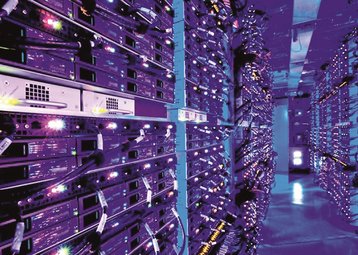Associated with alternating current (AC) power lines, harmonics can infiltrate both the voltage and current of electricity. This results in costly and disruptive damage to the electrical distribution systems found in data centers and many other facilities. Let’s delve deeper into the issue.
For the best efficiency and performance in a data center, the goal is to have voltage and current waveforms primarily consisting of the fundamental frequency, with minimal higher-order frequencies. Most utilities provide power with a reasonably smooth waveform, however, non-linear loads such as servers, variable frequency drives (VFDs) and other electrical devices can distort current and voltage waveforms.
These distortions are known as harmonics. These changes appear as supplemental frequencies higher than the fundamental frequency, which is 60Hz in the US and 50Hz in most other countries.
Harmonic currents are often exaggerated by the power supply units (PSUs) within the IT equipment itself, or by VFDs in cooling and ventilation equipment. Harmonic currents can then distort the voltage that is consumed by IT equipment, as the devices pull current distortion through an impedance.
Why harmonics matter
Minimizing energy costs and maximizing reliability are top priorities for most data center operators, but harmonics make both these goals harder to achieve.
Arguably the most prolific concern about harmonics is the increased losses on the power system conductors and transformers, adding heat to the power chain that drives up power and cooling costs. This has a knock-on effect on capital expenses, as harmonics reduce the lifespan of electrical equipment. Because of this, businesses may need to purchase replacement devices prematurely.
Harmonics can also result in costly utility penalties, as energy companies must compensate for harmonic-related waste by deploying additional generating capacity. For this reason, and to discourage harmonic pollution, many utility providers penalize customers that exceed distortion limits as defined by the IEEE-519 standard.
While these power quality issues are generally understood in the technical community, less appreciated is the effect of harmonic currents on the overall efficiency of a data center. Ultimately, harmonic currents are wasted energy that appear as heat. This means the amount of heat that must be removed from the data center is increased — a common and highly-publicized issue for data centers.
The answer
While there are a range of options for mitigating harmonics, the right option depends on the data center in question, the facility’s budget and the loads it supports. We recently helped one customer that was upgrading the cloud-based servers in a data center in Middlesex, UK. By assessing the data center facility and evaluating the current power quality issues, the audit identified any issues that could arise from the upgrade.
After this assessment, it was clear the best option for this facility was an active filter. We then supplied and installed a Comsys ADF P300 active dynamic filter to alleviate any potential issues associated with harmonics.
Active harmonic filters are the most flexible solution on the market. They monitor the network and inject the necessary amount of compensation current at any given time, which restores current waveform and lowers current consumption. This makes them ideal for installations for applications in which current load changes constantly, as was the case with the data center in Middlesex.
Line harmonics continue to be a costly issue for data centers, but fortunately, IT and facilities managers have access to a wide array of harmonic-mitigation technologies.


